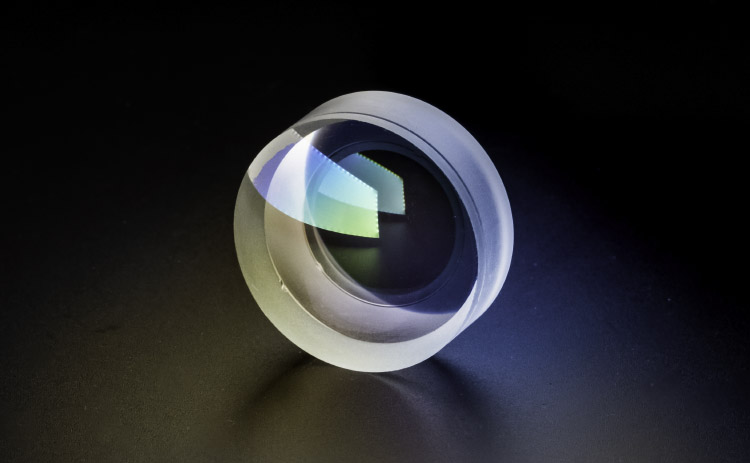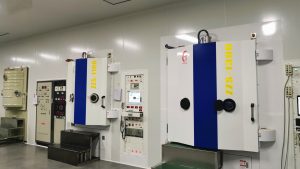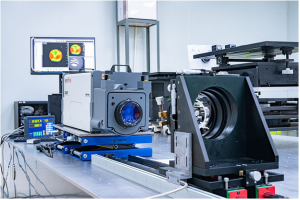What is laser collimation and the difference between laser collimation and laser focusing lens
Laser is a single wavelength light source with good coherence performance. It is widely used in scientific research, industry and other fields. Laser optics generally refers to the optical elements and devices used in the internal and external optical path of laser, such as laser focusing mirror, reflector, beam expander and laser cutting head. In order to let the partners intuitively understand the concept of laser focusing and collimation.
The collimator of lens manufacturer is aimed at the point light source, and the so-called point light source we see more in life, such as the ignition of match head, the bulb of old-fashioned flashlight and the laser from the energy optical fiber. For our industrial laser industry, the collimator is basically about the laser from the energy transmission fiber.
The light from the energy fiber is a point light source with divergence angle( θ) Yes, this parameter can generally be found. If we place this point light source on the focus of the optical fiber collimator, we know that the light emitted from the focus of a focusing mirror (collimator, which actually uses the focusing mirror in reverse) will become parallel light after passing through the focusing mirror. Many people ask me what the diameter of the beam is after passing through a collimator. Today, I’m here to give you the answer, which is 2F * tag (1 / 2* θ), If the divergence angle is 10 °, f = 150mm, the beam diameter from the collimator = 2 * 150 * tag (5 °) = 26.2466mm. This formula is of reference significance to the selection of galvanometer for welding machine using optical fiber transmission. Going on is what people in the optical fiber cutting machine industry want to know. For example, the energy density after passing through the optical fiber collimator is 150 times of the focal length of the collimator, which is equal to the focal length of the collimator after passing through the optical fiber collimator. According to the theory, the energy density after passing through the collimator after passing through the focal length of the collimator is equal to 150 mm.

Someone asked, why should we reduce the energy density? Why? Isn’t it better to concentrate the energy density? There are several reasons:
First: if the focal length of the focusing lens is shorter, the focal depth of the focusing lens will be shallower, which will easily lead to not deep cutting.
Second: the shorter the focal length and the smaller the focus, the smaller the cutting seam. A small seam is not conducive to the falling of molten slag, resulting in impervious cutting. Therefore, we generally try to use the focal length between 120-150mm as the focusing lens of the optical fiber cutting machine. In addition, there are two reasons why we don’t use a long focal length collimator. First, using a long focal length optical fiber collimator requires a larger lens diameter, which will lead to more trouble in mechanical design. Second, using a long focal length optical fiber collimator will lead to being very sensitive to the focus point of the optical fiber cutting machine when focusing. Once it deviates from the focus of the focusing lens a little, it will be impervious. This is why the focus of our general optical fiber cutting machine is generally between 60-100mm.
Beam expansion
In practical applications, it is often necessary to expand the laser beam. To achieve this function, at least two lenses are required. Most laser beam expanders adopt Galileo design and are composed of positive lens and negative lens. It is widely used because of its low expansion coefficient and simple and compact structure. The beam expander enlarges the laser beam to achieve smaller focusing spot.
In order to minimize the phase difference, it is best to choose this kind of flat convex and flat concave lenses, and place them on one side of the plane. The phase difference can be further reduced by using the central part of the lens, so it is helpful to choose a larger size lens. The design of this beam expansion is called Galileo beam expansion. Using two convex lenses with positive focal length can also realize the beam expansion function, which is called Kepler beam expansion, but the size of this design is longer. The bex series beam expander of Nanjing wavelength optoelectronics has complete specifications and can also be customized according to the needs of customers. In addition, some beam expanders with characteristic needs, such as high-power beam expander, are mainly used in 1030-1090nm fiber lasers. The fused quartz material used in the beam expander is used to meet high-power applications and connected through C interface. In addition to the fixed zoom beam expander, there are also zoom beam expanders that can cover from ultraviolet to infrared. The zoom range can be customized according to customer samples.



